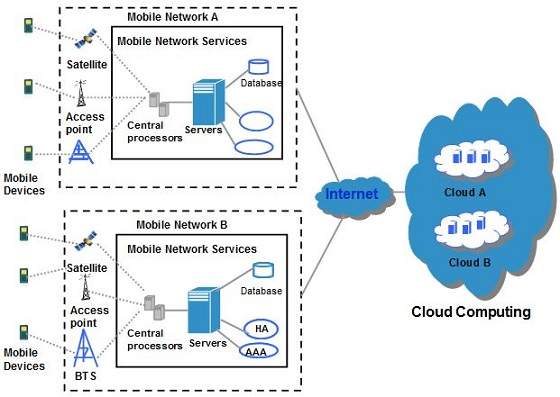Record
based logical models are used in describing data at the logical and view
levels. It is used to specify the overall logical structure of the database.
Record
based models are so named because the database is structured in fixed format
records of several types. Each record type defines a fixed no. of fields, or
attributes, and each field is usually of a fixed length. The three most widely
accepted record based data models are the relational, network and hierarchical
models.
i) Relational model
The
relational model uses a collection of relations(tables) to represent both data
and the relationships among those data. Each table has multiple columns, and
each column has a unique name.
Customer
Name
|
Address
|
Account
No.
|
Account
No.
|
Balance
|
Ram
|
KTM
|
A-1
|
A-1
|
500
|
Laxman
|
Lalitpur
|
A-2
|
A-2
|
700
|
Bharat
|
Jhapa
|
A-3
|
A-3
|
900
|
Fig. A sample relational database
ii)Network model
Data
in the network model are represented by collections of records and
relationships among data are represented by links, which can be viewed as
pointers.
Ram
|
KTM
|
A-1
|
500
|
||
Laxman
|
Lalitpur
|
0002
|
A-2
|
900
|
|
Bharat
|
Janakpur
|
0003
|
A-3
|
6000
|
CustomersName
|
DustomerStreet
|
deposit
|
Account No
|
Balance
|
|
Customer
|
Account
|
||||
Fig. data structure diagram for
network data model
iii) Hierarchical model
It is
similar to the network model in the sense that data and relationships among
data are represented by records and links, respectively. Records are organized
as collections of trees rather than arbitrary graphs.
Fig.
A sample hierarchical database
Custom
erName
|
CustomerStreet
|
CustomerCity
|
Customer
|
Account
No.
|
Balance
|
Account
|
Fig. Tree structure diagram for
hierarchical model
Physical models
Physical
data models are used to describe data at the lowest level. There are only few
physical data modes in use. Two widely known ones are the unifying model and
the frame memory model.
Schemas and instances
Database=description
of database + database itself
The
overall design of the database is called database schema. Database schema is
specified during database design and not expected to change frequently.
Student
|
Course
|
||||
Name
|
Class
|
Major
|
Course
Name
|
Duration
|
Remarks
|
Fig. Schema Diagram
Database changes over time as information is inserted
and deleted. The collection of information stored in the database at a
particular moment is called instances in the database. It is also called
database state or snapshot or current set of occurrences. When database is
designed, the database is in empty state with no data. It is in initial state
when database is loaded with data. Thus at any point, database has a current
state. When any field is added to database, it is called schema evolution.


No comments:
Post a Comment